Generations
Theories of Generation
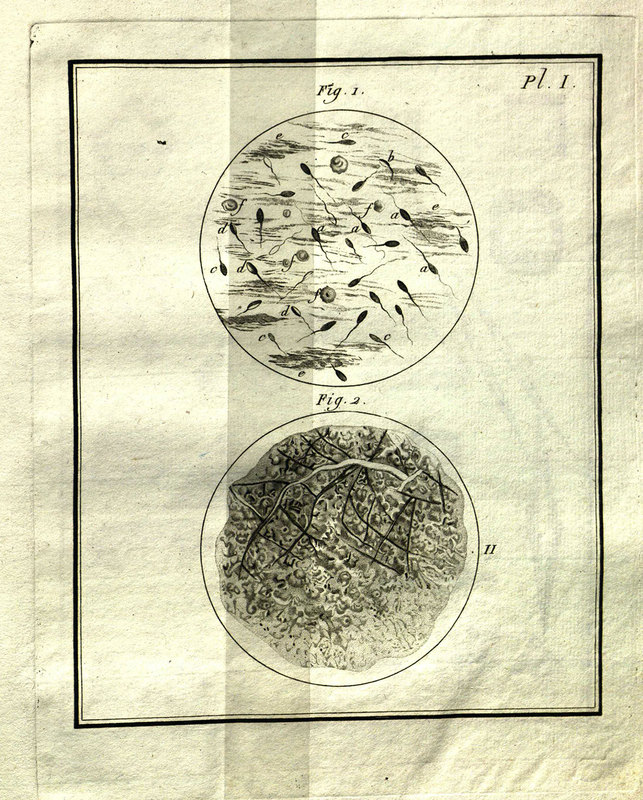
Wilhelm Friedrich von Gleichen-Russwurm (1717-1783). Dissertation sur la generation, les animalcules spermatiques, et ceux d'infusions. Paris: De l'imprimerie de Digeon, An VII [1799] Rare Folio QL 966 .G5514
Wilhelm Friedrich von Gleichen-Russwurm was a biologist who worked primarily on plants, but in this publication, he compares the sperm cells of various animals.
“We know that a fertilized egg contains some preformed elements—namely, the genes and a certain number of different regions of cytoplasm—and we know that during development these interact in epigenetic processes to produce final adult characters and features that are not individually represented in the egg. "
Conrad Waddington
Today, the fertilization process is common knowledge: sperm and egg cells carrying genes from each parent combine to create their offspring. However, before scientists gained an understanding of cells, genes, and DNA, people had no mechanism for understanding conception. Aristotle, considered a medical authority for thousands of years, thought that a man's contribution to an embryo was its form or spiritual essence, while the woman only contributed the raw material, its flesh. Theories derived from Aristotle were known as epigenesis because they involved the shaping of raw material, part by part, into a human being.
By the seventeenth century, scientists were beginning to question these ancient ideas. Using microscopes, some scientists noted that structures present in adult organisms were also present in their embryos. They hypothesized that embryos were pre-formed, miniature versions of their adult selves with pre-determined anatomy and behavior. Some scientists held that the pre-formed embryo was contained in the mother’s egg; others that it was in the father’s sperm. This family of hypotheses came to be known as preformationism.
Preformationism directly influenced ideas about heredity and human nature. Several scientists suggested that all humans had been contained, unchanged and pre-formed, in the eggs of Eve. This new science was even used to bolster religious doctrine. Jan Swammerdam, an entomologist and one of the founders of preformationism, wrote, “Thus original sin is explained, for all men were contained in the organs of Adam and Eve.” For preformationists, everything about an individual was pre-determined, not just before birth, but at the beginning of time.
Preformationism remained the dominant theory of generation for most of the eighteenth century, but gradually, scientific thought shifted and new discoveries were made, including cell theory and modern genetics. Conrad Waddington, the biologist who coined the term epigenetics from the root word epigenesis, noted that both epigenesis and preformation are involved in embryonic development. Modern epigenetics thus builds on these two strains of thought to consider the interaction between that which is fixed and that which is fluid in our everyday lives.
Preformation and Ovism
The works on display in this section are by early scientists who worked on demystifying the processes of generation.
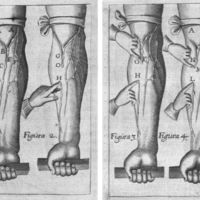
William Harvey (1578-1657). Exercitationes anatomicae, de motu cordis & sanguinis circulatione. Roterodami: Ex officina Arnoldi Leers, 1660. Rare QP101 .H36 1660
Read online
Although best known for this work on the circulation of the blood, William Harvey was also an important early embryologist. He refuted the theory of spontaneous generation, the idea that living creatures could arise from inanimate materials. He also compared the reproductive anatomy of several animals and traced the development of chicken embryos within the egg. Harvey ascribed to the theory of epigenesis, but he points out many errors in Aristotle's thinking. Ironically, he gave rise to the ovist camp of the preformationists by coining the phrase Ex ovo omnia (from the egg, everything), to convey his idea that all animals have eggs at some point in their reproductive process. Harvey's work laid a foundation for the modern science of embryology.
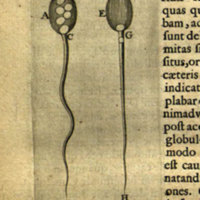
Antoni van Leeuwenhoek (1632-1723). Opera Omnia, seu arcana naturae, ope exactissimorum microscopiorum detecta... Lugduni Batavorum: Apud Joh. Arnold. Langerak, 1719-1730. Rare Vault QH9 L4 1719
Read online
Antoni van Leeuwenhoek discovered sperm in semen by means of a microscope in 1677. At first he thought they were animalcules, the term used at the time for one-celled organisms such as amoebas and protozoa. Later, Leeuwenhoek and others adopted the view that a pre-formed embryo in the shape of a tiny human must be inside each sperm cell, and this is what developed into a fetus.

Lazzaro Spallanzani (1729-1799). Dissertations Relative to the Natural History of Animals and Vegetables. London: Printed for J. Murray, 1784. Rare QH 306 .S7313 1784
Read online
A Catholic priest and intensive scientific researcher, Lazzaro Spallanzani was one of the last proponents of ovism. He was best known during his lifetime for providing a conclusive refutation of the theory of spontaneous generation, the idea that living creatures could arise from inanimate material, such as the belief that flies were born from mud. Spallanzani was particularly interested in reproduction, and his experiments included the first artificial insemination of a viviparous animal (a dog, in this case) and the first in vitro fertilization (of frog eggs).
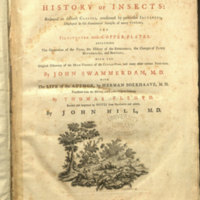
Jan Swammerdam (1637-1680). The Book of Nature, or, The History of Insects... London: Printed for C. G. Seyffert, 1758. Rare Folio QL 362 .S97 1758
Jan Swammerdam is considered one of the founders of preformationism, the idea that embryos develop from tiny pre-formed versions of their adult bodies. Interested in both insects and human reproduction, Swammerdam drew parallels between the two by dissecting insect eggs, larva, and human reproductive organs. Swammerdam argued that all species come from eggs, and he was among the first physicians to realize that human ovaries produce eggs, which he claimed to have seen himself.
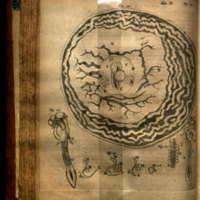
Marcello Malpighi (1628-1694). Opera omnia, seu, Thesaurus locupletissimus botanico-medico-anatomicus... Lugduni Batavorum: Apud Petrum Vander Aa, bibliopolam, 1687. Rare QH9 .M34 1687
Read online
With Jan Swammerdam, Marcello Malpighi is one of the founders of preformationism. He believed that embryos develop from tiny pre-formed versions of themselves. Malpighi studied chicken embryos with a microscope and published the results in De Formatione de pulli in ovo in 1673, where he suggested that structures such as the heart and blood vessels exist at every stage of development - at some stages, they are just too small to see. Malpighi's diagrams and illustrations of embryonic development were well regarded in his time.
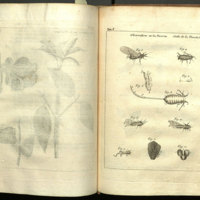
Charles Bonnet (1720-1793). Oeuvres d'histoire naturelle et de philosophie. Neuchatel: S. Fauche, 1779-1783. Rare QH9 .B66 1779-1783
Read online
Working primarily on insects, Charles Bonnet discovered parthenogenesis, or clonal asexual reproduction, when he isolated an aphid to see whether it could reproduce on its own. The isolated aphid eventually produced numerous offspring. Bonnet, however, took this as evidence of ovist preformationism, claiming that offspring existed pre-formed in the female reproductive system. Although he was wrong about embryology, Bonnet's work on observation and experimental design laid foundations for modern biology.